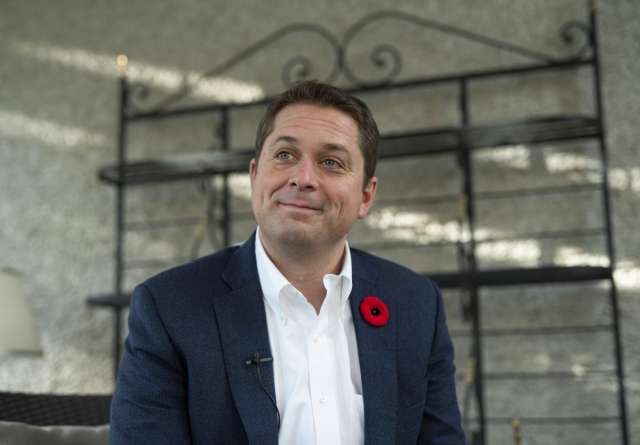I was walking my kids to school through fog so thick it was like a Stephen King novella when I got a text from a friend. It was just like quite a few texts or messages or calls I’ve been getting since last week. My friend had told me confidently before the weekend that Andrew Scheer’s position as leader of the Conservative party was safe. Now? They’re not so sure.
Again, there’s a lot of that going around. People who a week ago were still fully aboard Team Scheer, or maybe weren’t but still expected him to survive, are changing their minds. Maybe it’s because of some of the criticism of Scheer in the media. Maybe it’s because some of the dissent within the Conservative party is now spilling out into the open.
Or maybe it’s because of the map.
The map in question was first published in Maclean’s two days ago. It’s based on data from 338Canada.com, run by Philippe J. Fournier. 338Canada.com aggregates and analyzes polls; now that the election is over, it’s analyzing the actual results. The map couldn’t be simpler (though the work that went into creating it was doubtless complicated!). It’s colour-coded, and shows, by riding, where the parties did better or worse in 2019 compared to 2015. Green means better, red means worse … the darker the colour, the stronger the trend. And in the essential ridings in and around the City of Toronto (including its 905 suburbs), the Conservative map shows a whole lot of red.

This is important. We’ve all heard over the last week how the Conservative result, though disappointing, actually contained a lot of good news for Scheer. He won the popular vote, reduced Trudeau to a minority, is on the same path as Stephen Harper after 2004, and so on and so on. But it was also understood well before the vote that winning the 905 wasn’t optional. It was the key battleground between Liberals and Conservatives, and the Liberals were probably about as hobbled by policy surrenders and leadership scandals as they ever will be.
And the Conservatives still lost ground. In 55 ridings, the Conservatives lost support in 47, relative to 2015.
The 2015 comparison is an important one. The Conservatives lost that election, too, and also did badly in the Toronto area. This time, even post-blackface, while the Tories improved in Atlantic Canada and owned the west, they completely fizzled in the GTA … again, despite the fact that Trudeau was absurdly vulnerable.
Scheer has already said that the Conservatives are conducting a full review of their campaign — what worked and what didn’t. He faces a leadership review vote in six months, and the findings of the review will no doubt be a central part of what makes or breaks him then. But in the meantime, it seems that the matter at hand is actually straightforward: why did the Conservatives do worse in the GTA this time compared to their last lost election? And the related question, the only one that matters for Scheer’s future: can the party realistically believe he’ll do better there next time?
If not, the answer is clear. If the Conservatives can’t win the Toronto area with Scheer as leader, they can’t win, period.
National Post
























